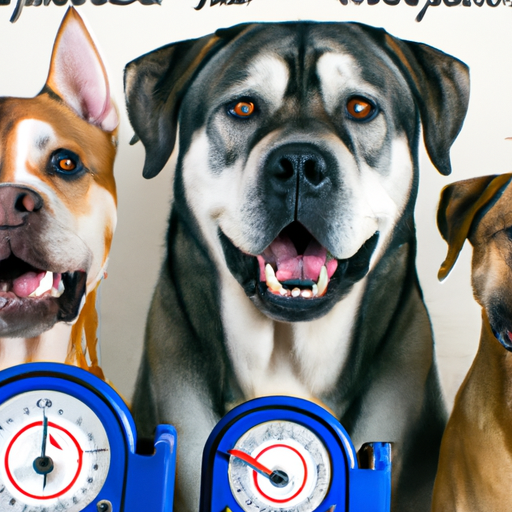You’re a caregiver, a nurturer by nature. You’re probably drawn to dogs, these loyal, loving creatures who give so much and ask for so little in return. But have you ever wondered about their strength, particularly which dogs have the strongest bite force? Let’s dive into this intriguing topic.
H2: Understanding Bite Force
Before we delve into the breeds with the strongest bite force, it’s crucial to understand what bite force is. Simply put, it’s the amount of pressure an animal’s bite can exert.
- Measured in Pounds Per Square Inch (PSI): The bite force of dogs (and other animals) is measured in PSI.
- Depends on Jaw Structure: A dog’s bite force depends on its size, jaw structure, and muscle strength.
Imagine holding a football in your hand and squeezing it as hard as you can – the pressure you exert there is akin to bite force.
H2: Top 5 Dogs With the Strongest Bite Force
Now that you have a basic understanding of bite force, let’s take a look at the breeds with the highest numbers.
- Kangal: This Turkish shepherd dog tops the list with an impressive bite force of 743 PSI.
- English Mastiff: Not to be outdone, the English Mastiff comes in second with a bite force of 556 PSI.
- Wolfdog: A hybrid between a wolf and a dog, the Wolfdog has a bite force of 406 PSI.
- Rottweiler: Known for their strength, Rottweilers have a bite force of 328 PSI.
- African Wild Dog: This wild dog breed has a bite force of 317 PSI.
H2: Why Bite Force Matters
Now, you might be wondering why any of this matters. After all, you’re a caregiver, not a dog fighter. But understanding a dog’s bite force can be helpful for several reasons:
- Safety: Knowing a dog’s bite force can help you understand potential danger, especially if you have small children.
- Training: Training can be more effective when tailored to a dog’s strength.
- Understanding Behavior: Understanding your dog’s bite force can also give you insight into their natural behaviors.
H2: Mitigating the Risks
Even if your dog has a strong bite force, it doesn’t mean they’re dangerous. With proper care and training, any dog can be a loving, safe family pet.
- Socialization: Early socialization with people and other animals can reduce aggression.
- Training: Obedience training teaches a dog to control their impulses.
- Regular Exercise: Regular physical activity can prevent frustration that might lead to biting.
H2: Frequently Asked Questions (FAQs)
Q1: Does a stronger bite force mean a dog is more dangerous?
No, a strong bite force does not inherently make a dog more dangerous. Behavior depends on training and temperament.
Q2: Can a human survive a Kangal bite?
Yes, while painful and potentially harmful, a human can survive a Kangal bite with proper medical attention.
Q3: Is my small dog’s bite force weak?
Not necessarily, small dogs can have a strong bite force relative to their size.
Q4: How can I train my dog not to bite?
Through consistent training, positive reinforcement, and socialization. If you have difficulty, consider hiring a professional dog trainer.
Q5: Can a dog’s bite force be reduced?
No, a dog’s bite force cannot be reduced as it’s determined by their physical characteristics. Training can teach them to control their bite.



